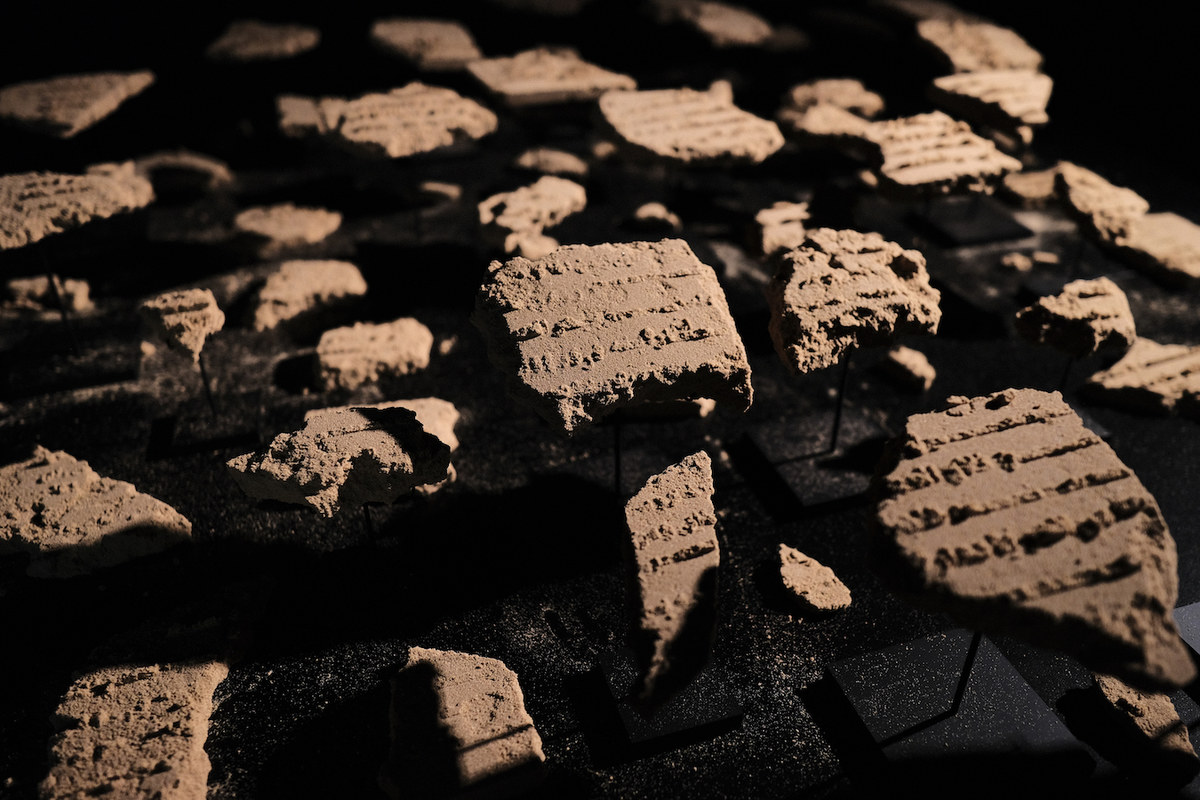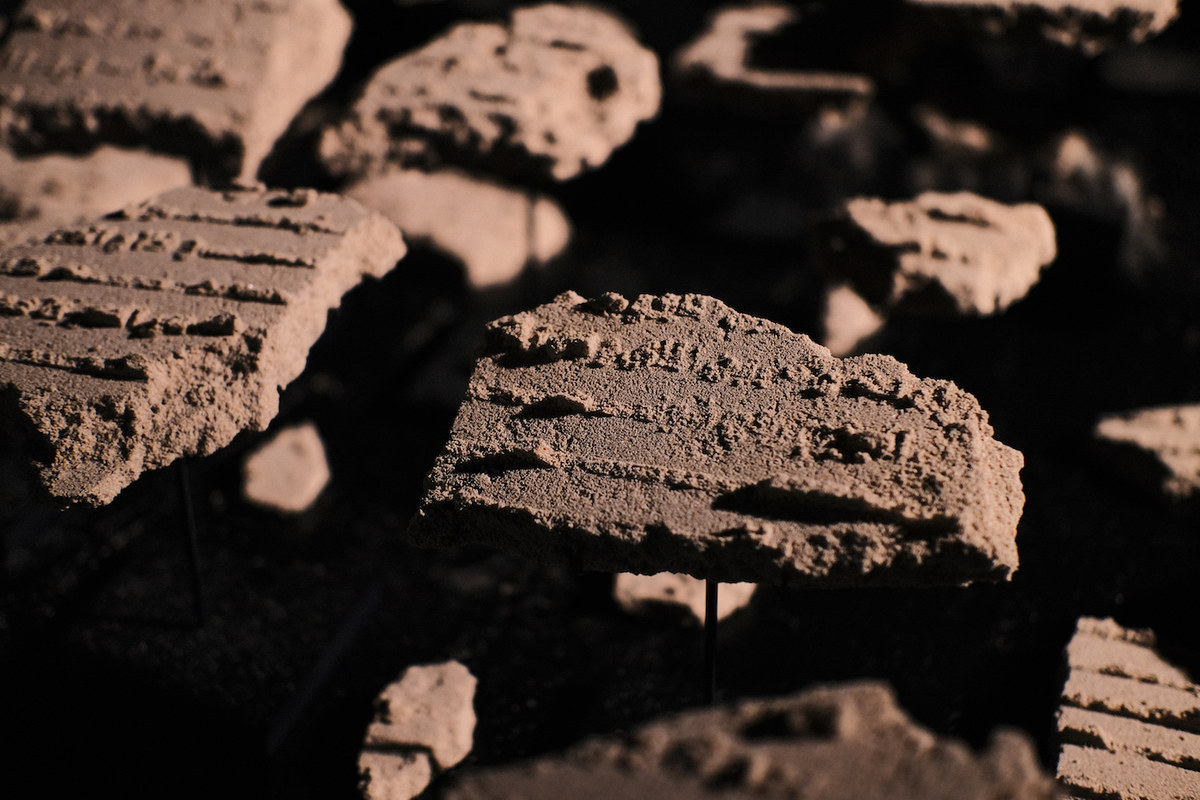DUBAI: Bahraini-American artist Nasser Alzayani has come a long way from his school days, when his art teachers noticed his talent but dismissed the idea that it could ever be developed into a career.
In 2015, Alzayani gained a Bachelor’s degree in architecture from the UAE’s American University of Sharjah, but it was his second degree — a Master of Fine Arts in glass at the Rhode Island School of Design — that shaped his research-based practice and continues to elicit curiosity from others.
“It’s funny because most people expect me to talk about glass-blowing and skills like that, but it was something I never really picked up,” Alzayani tells Arab News with a chuckle. “The glass department that I was in was very much focused on allowing us to develop in the directions that we wanted to and were interested in.”

The multifaceted artwork that Alzayani has gone on to produce examines the notions of memory, erasure, documentation, preservation of history, and story-telling. (Supplied)
The multifaceted artwork that Alzayani has gone on to produce examines the notions of memory, erasure, documentation, preservation of history, and story-telling. “I was very interested in using glass, but more towards the glass-casting side — trying to explore more metaphorical things or poetic characteristics within the use of glass, like transparency, opacity, how light travels, and how the fragility of material can be a metaphor that drives a narrative forward,” he explains.
To produce glass, a process of casting sand is used as a form to create molds. That natural resource — sand — played a particularly crucial role in Alzayani’s creative thinking, leading him to one of his most personal projects.
“I was really stopped in my place when I discovered the potential of working with sand,” he says. “Because I thought I had this relation to it, in being from this region, and with it being such a primary material we experience in our daily life.”

To produce glass, a process of casting sand is used as a form to create molds. (Supplied)
In 2021, Alzayani became the first recipient of the $50,000 Richard Mille Art Prize at Louvre Abu Dhabi, where he showcased his latest project — “Watering the distant, deserting the near” — between November 2021 and March 2022. It was an installation of extremely delicate, ancient-like tablets, made from disintegrating damp sand. They contained traces of Arabic inscriptions related to a now dried-out freshwater spring in Bahrain, called Ain Adhari. During the Fifties and Sixties, this life-giving, and culturally significant, spring — the largest in the country — attracted hordes of people to its lush greenery and cool waters.
“The project began as a very personal exploration, because I had this memory of visiting Ain Adhari as a child,” Alzayani says. “In my head, I can only remember one instance. But at the time I was recalling this, the spring had already gone dry, so there was no way to really experience that place even if I had gone there. It became this search to try and figure out whether this memory I had was real or not.”
Alzayani delved into the archives and even went to the area, which no longer has the original spring. Some of its surrounding buildings have been revived, and there is a man-made swimming pool there.

In 2021, Alzayani became the first recipient of the $50,000 Richard Mille Art Prize at Louvre Abu Dhabi. (Supplied)
“I wanted to revisit the space and see if it triggered some memories for me. It was a very strange experience,” he says. “There were definitely parts of the landscape I recognized, like the water channels carrying water away from the spring, but as I got closer it became more and more foreign to me, because it had also undergone so many changes.”
The project is also about words and music. During his research, Alzayani discovered that the spring was visited by the legendary Welsh singer Shirley Bassey in 1976. According to a vintage BBC documentary, she flew in via Concorde — a first-of-its-kind flight from London to Bahrain. “It’s a really incredible thing to watch, because you see her get on the flight, and she’s singing on the plane. She lands in Bahrain, gets in a Rolls-Royce that has ‘Shirley’ on the license plate, and, eventually, you find her performing at Ain Adhari. It’s really a magical moment, where you see her emerging from behind the trees and at the same time, it’s this really eerie experience, where we’re watching it now, knowing what we know,” he says.
Bassey’s choice of song is “The Way We Were,” a nostalgic composition about memories and loss. “It’s a really strange, almost prophetic, moment,” Alzayani says.
The title of Alzayani’s project, “Watering the distant, deserting the near,” is a phrase common to Bahrain and is mentioned in “Adhari” a melancholic poem with political undertones written by Bahraini poet Ali Abdulla Khalifa, which addresses the spring and gives it an identity.

At the Louvre Abu Dhabi exhibition, the tablets were presented to visitors without the usual protection of glass. (Supplied)
“The spring had channels that would carry this water great distances to water the lands of the wealthy. This (poem) talks about the struggle for resources and the balance of power,” Alzayani explains. “He describes in one of the lines how the spring has dried up but then, our eyes began to spring as a result of that. They are very powerful words.”
The first two lines of the poem were included in a song by Mohamed Yousef Al-Jumairi, and Alzayani stenciled its lyrics into his tablets, which resemble the archaeological totems found in major museums. At the Louvre Abu Dhabi exhibition, the tablets were presented to visitors without the usual protection of glass.
“I wanted people to get a sense of the fragility of these objects and (realize) that they were not going to last forever,” says Alzayani. “My hope is that the crumbling of these pieces actually creates a stronger, more lasting memory of the story. Once that’s gone, all that’s going to remain is what’s in your head.
“It just made a lot of sense to incorporate sand and use its physical properties to push forward these metaphors of landscapes being fragile — memory as being something ephemeral,” he continues. “When you lose the physical existence of a landscape, what happens to its existence in your memory?”
So was Alzayani able to work out whether his own memory of Ain Adhari was real or artificial?
“I really don’t have an answer. But I think that’s OK, in a sense, because the project really became about telling the collective history and memory of this place and how that is changing and fading,” he says. “It’s about trying to encourage people to hold on to memories and give them some sense that these are things worth documenting and cherishing.”












